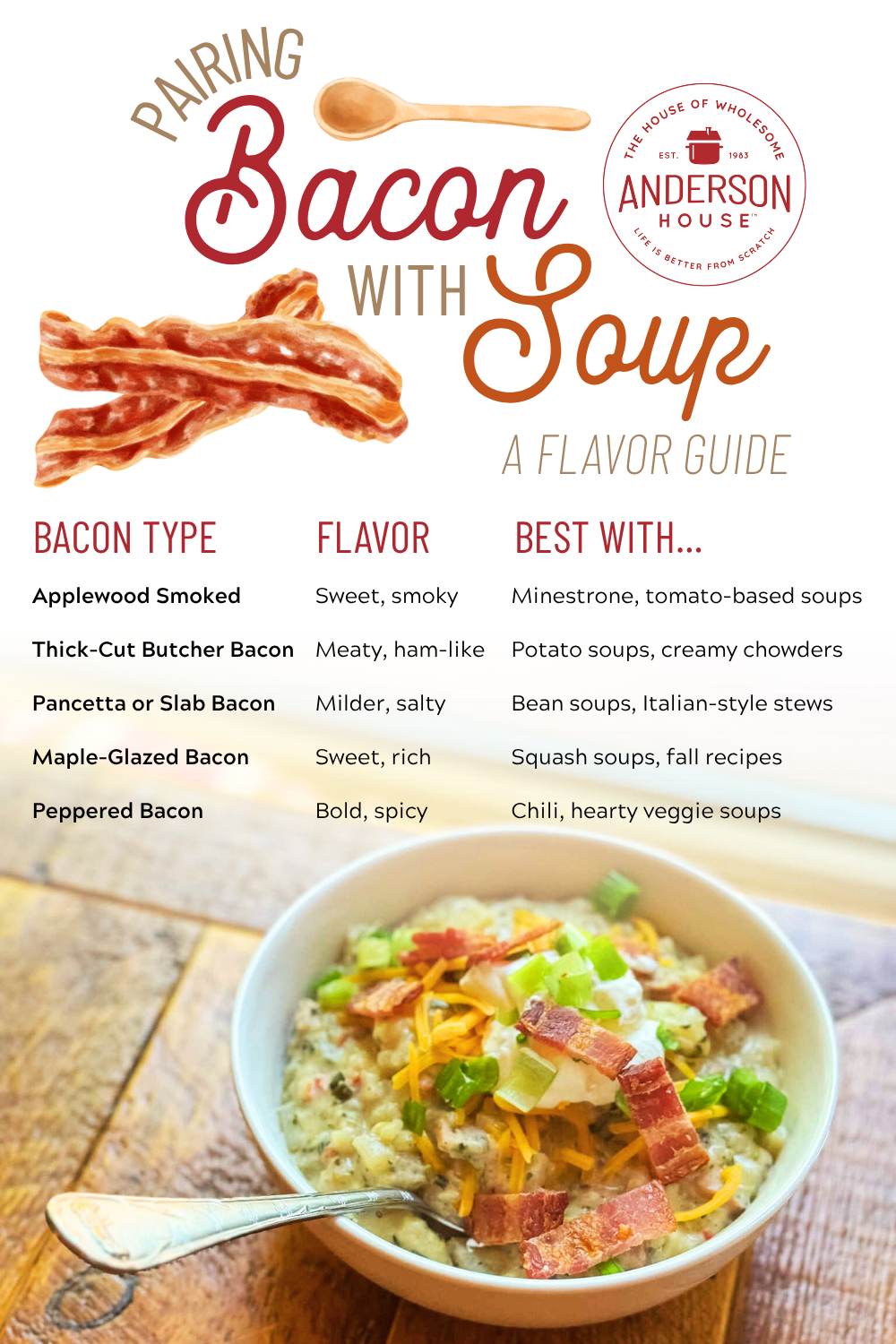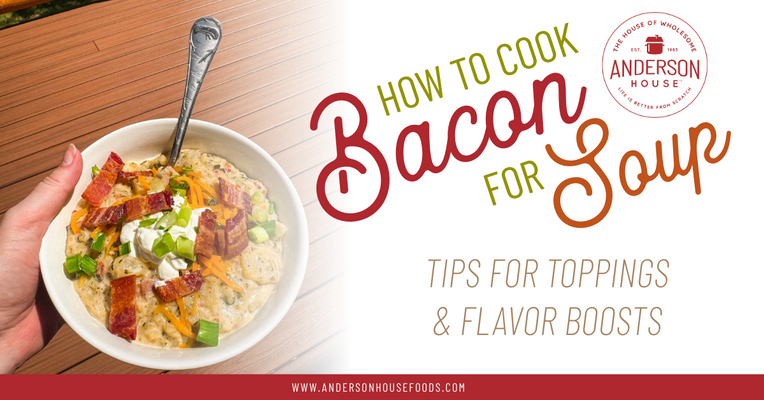The Best Way to Cook Bacon for Soup (Tips for Toppings & Flavor Boosts)
Posted by Nicola Prybell on Aug 8th 2025
Let’s talk bacon. Specifically, how to cook bacon for soup—because when it’s done right, bacon can totally elevate the flavor of your bowl. Whether you're making it as a crispy soup topping or stirring it directly into the pot, bacon adds richness, depth, and smoky goodness to just about any hearty recipe.
Recently, I’ve experimented with bacon in several of our soups. From buttery-soft slabs of country-style bacon in our Rocky Mountain Loaded Potato Soup to classic chopped bacon that simmers right in our New York Corner Café Minestrone, I've learned a few things about what works (and what doesn't). Below are my favorite tips for cooking bacon for soup, including texture tricks, pan preferences, and ideas for pairing different types of bacon with your favorite blends.
How to Cook Bacon for Soup (Without Overdoing It)
If you’re adding bacon to soup, start by asking this: Are you using it as a topping or stirring it in? That decision alone should guide how you cook it.
1. For Bacon as a Soup Topping (Think: Loaded Potato Soup)
In this case, you want a crisp texture that holds up when sprinkled on top. Here's how to get that perfect crunch without burning it:
-
Use medium heat. Don’t blast the bacon. Too much heat and the fat renders too quickly, which leads to burnt edges and chewy centers.
-
Slice before cooking. Cut bacon into ½-inch pieces before putting it in the pan—it cooks more evenly this way.
-
Use a heavy skillet (cast iron if you’ve got it). You’ll get better browning and heat distribution than in a non-stick pan.
-
Drain and pat dry. Always place the cooked pieces on a paper towel-lined plate to stay crisp.
When I made our Rocky Mountain Loaded Potato Soup, I used thick-cut, country-style bacon from a local butcher. It was smoky, meaty, and had the texture of ham rather than crispy bacon—so good, I ended up stirring it all into the soup instead of using it as a topping. Honestly, it was a happy accident and totally delicious. The rich bacon flavor melted into the potatoes and creamy broth and gave it a rustic, smoky boost that worked beautifully with the broccoli, tomato, and scallion notes in the mix. I ended up topping the soup with some leftover bacon from breakfast that morning. No such thing as too much bacon.
2. For Bacon Stirred Into Soup (Think: Minestrone or Chili)
If the bacon is going directly into the pot, it doesn’t need to be fully crisp—it just needs a head start to release its flavor.
-
Cook until just shy of crisp. About 8–10 minutes is enough to render the fat and build a flavor base.
-
Use the same pot. After cooking the bacon, don’t switch pans. The rendered bacon fat makes a flavorful base for sautéing onions or other aromatics.
-
Don’t overcook later. If you’re simmering soup for an hour or more (like in our Minestrone), bacon that’s too crispy at the start can turn rubbery. Slightly chewy bacon works better for long simmers.
In our New York Corner Café Minestrone, the bacon is sautéed before adding the beans, broth, and veggies. This early step builds a smoky flavor into the soup’s base that complements the cranberry beans, corn pasta, and fresh basil. It's subtle but adds just enough richness to round out the broth.
3. For Pre-Cooked Bacon (Think: Chili or Quick Mixes)
Some soups (like our Michigan Ski Country Chili) call for already-cooked and chopped bacon. In this case, texture is still key.
-
Cook bacon in batches ahead of time and store it in the fridge or freezer. You can reheat in a skillet or microwave briefly before adding.
-
Go for a chewy finish if it will simmer again in the soup.
-
Use thinner bacon if you want the flavor to melt into the broth, or thicker cuts if you want bites of meat throughout.
Bonus Tip: Match Bacon Flavor to Your Soup
All bacon is not created equal. Consider the flavor profile of your soup when choosing what type of bacon to use.

Final Thoughts
Whether you're going for a crispy bacon soup topping or letting it simmer into the broth for an extra layer of flavor, the way you cook your bacon matters. It doesn’t take much—just a little technique and the right timing—to turn a regular pot of soup into something crave-worthy.
And if you accidentally make too much bacon? Just do what I did. Stir it all in and call it magic.



